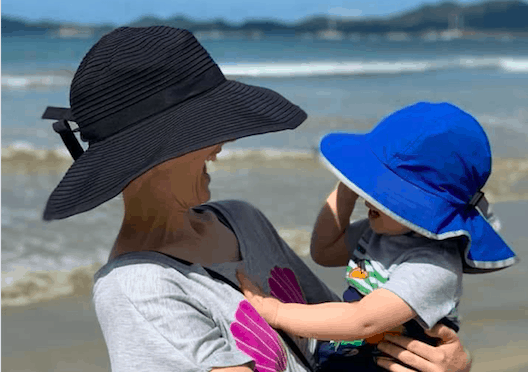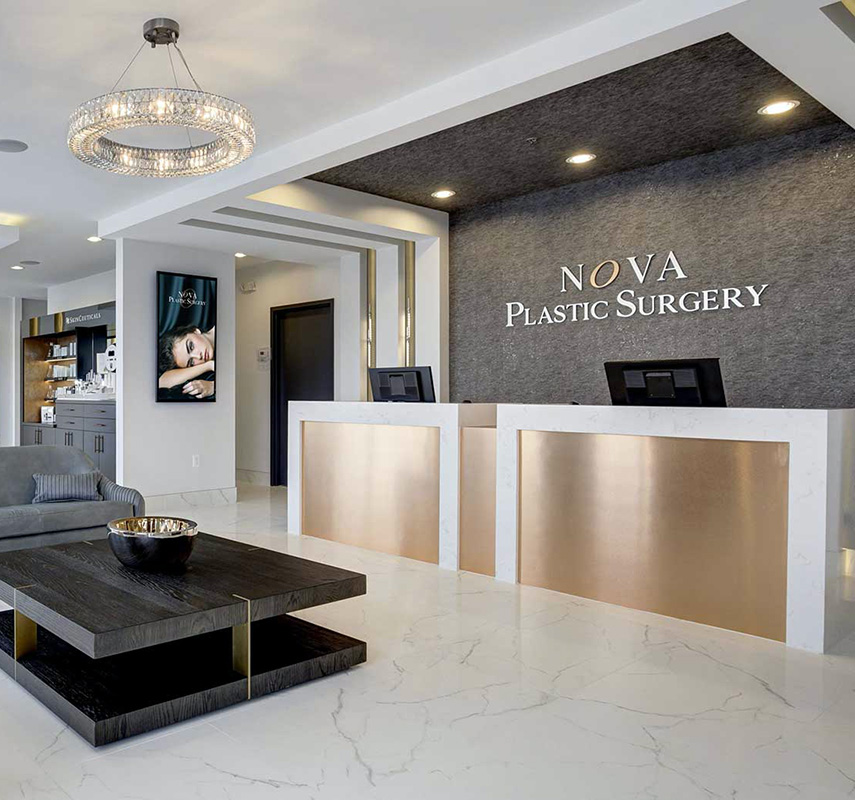
Why do we want to protect our faces?
Besides helping to delay the signs of aging, we also want to help prevent developing skin cancer!
Seek Shade
The sun’s harmful rays are not as powerful or damaging early in the morning or late in the evening. However, for the majority of the day, you need to be careful. A lot of people think that they will be fine if they simply stand in the shade. They think they won’t need to do any of the other recommendations if they stand under a tree or umbrella. Since ultraviolet radiation gets reflected off surfaces such as buildings, water, snow, and concrete, you need to consider more than just shade protection from above. Darker surfaces reflect less UV than lighter ones.
Hats for Sun Protection
First, the top of your head needs to be covered. No baseball hats or visors! A wide-brimmed hat offers protection from ultraviolet rays for your scalp, especially if your hair is thinning or you have a wide part. It can be difficult to get sunscreen on your scalp, so the hat solves this problem. It also shades your ears and your face. Also, be careful with straw hats- they tend to have a loose weave and the holes can let in UV light. If you want a straw hat, look for one that has a fabric liner to help block those rays.
Sunglasses for Sun Protection
It is also very important to protect your eyes. Wearing sunglasses will help decrease your need to squint, so you will have fewer wrinkles. More seriously, ultraviolet damage to your eyes can lead to cataracts over time. A more acute, short term type of damage your eyes can experience is known as snow–blindness. Children are even more sensitive to the effects of the sun’s rays, so it is imperative they wear sunglasses when they are out on a sunny day.
Make sure to wear the wraparound style sunglasses, as these will protect your eyes from the sides too. The type of glass or plastic matters too! The actual darkness of the lens doesn’t protect you as much as the type of material the lens is made from. Also, darker lenses can affect your ability to see clearly. Plastic lenses are naturally more absorbent of ultraviolet radiation than glass, but glass tends to scratch less. Polarized lenses help to reduce glare and eyestrain.
Sunscreen
Sunscreen use truly deserves its own blog (check out last weeks!), but here is a quick review and a few other pointers. A hat is not enough! The shade you get from a hat does help, but the sunscreen is essential to protect you from UVA and UVB rays as you are moving around. Also, the sun’s rays are reflected off of surfaces such as windows, sidewalks, and water. As you move around throughout your day, even if you are protected from above by your hat, the ultraviolet rays will still reach you from other angles. Don’t forget those ears and your neck!
If you can’t wear a hat and you still want to try to get sunscreen on your part or scalp, there are a few brands of powdered sunscreens that you can brush into your scalp. You could also try a spray-on sunscreen, if you don’t mind your scalp/hair feeling a little greasy.
Reminder: use at least an SPF 30 to make sure you are getting coverage for both UVA and UVB light. Reapply every 2 hours. For those with sensitive skin, rosacea, eczema or allergies look for mineral-based sunscreens with zinc oxide and titanium dioxide. Those ingredients tend to be less irritating than some of the other sunscreens.
If you have psoriasis, it is still important to protect yourself from the sun. While it is true that sunlight can help your condition, if you get a bad sunburn, you can actually cause your psoriasis to flare. You could even get new patches of psoriasis where you have a blistering sunburn. This is called the Koebner phenomenon. So, you still want to wear sunscreen to protect yourself.
Sunscreen will wipe away as you touch your face and sweat, so you must remember to keep applying throughout the day.
Antioxidants
Have you ever been in the situation where you were out in the sun all day and reapplied your sunscreen every 2 hours like you are supposed to and it was SPF 100 and you STILL got burned? Well, sunscreens aren’t perfect. They do NOT block 100% of the ultraviolet damage that you will get all day long. You will still get some damage. Even if you follow all of the above tips perfectly.
This is where antioxidants come to the rescue. You can use antioxidants to help repair the damage that you will inevitably still receive even though you are working so hard to avoid it. Vitamin C is a potent antioxidant that is excellent for your skin. It can help to fade hyperpigmentation, prevent you from developing fine lines, moisturize, and helps promote collagen formation, just to name a few of its many benefits. SkinCeuticals has developed a line of antioxidant products to help you repair that damage to help reduce wrinkles and sunspots and to prevent new damage. We recommend SkinCeuticals as their medical-grade Vitamin C is formulated under the Duke Antioxidant patent and guarantees effective penetration to the skin. Be very cautious about purchasing Vitamin C over the counter that is not medical grade; these products often do not penetrate the skin and are not tested to guarantee they do what they claim to do for you.
Vitamin C is an important first step in your morning skincare routine. After cleansing, apply 4-5 drops of your antioxidant to your palm and tap the product onto your face until it has absorbed. Blend the remaining product onto your neck and chest. Then you are ready to moisturize, apply corrective products, and finish your morning skincare routine with sunscreen.
Not sure what you need? The knowledgeable staff at NOVA Plastic Surgery and Dermatology in Ashburn, VA can help recommend the best products for your skin for Prevention, Protection, and Correction.


